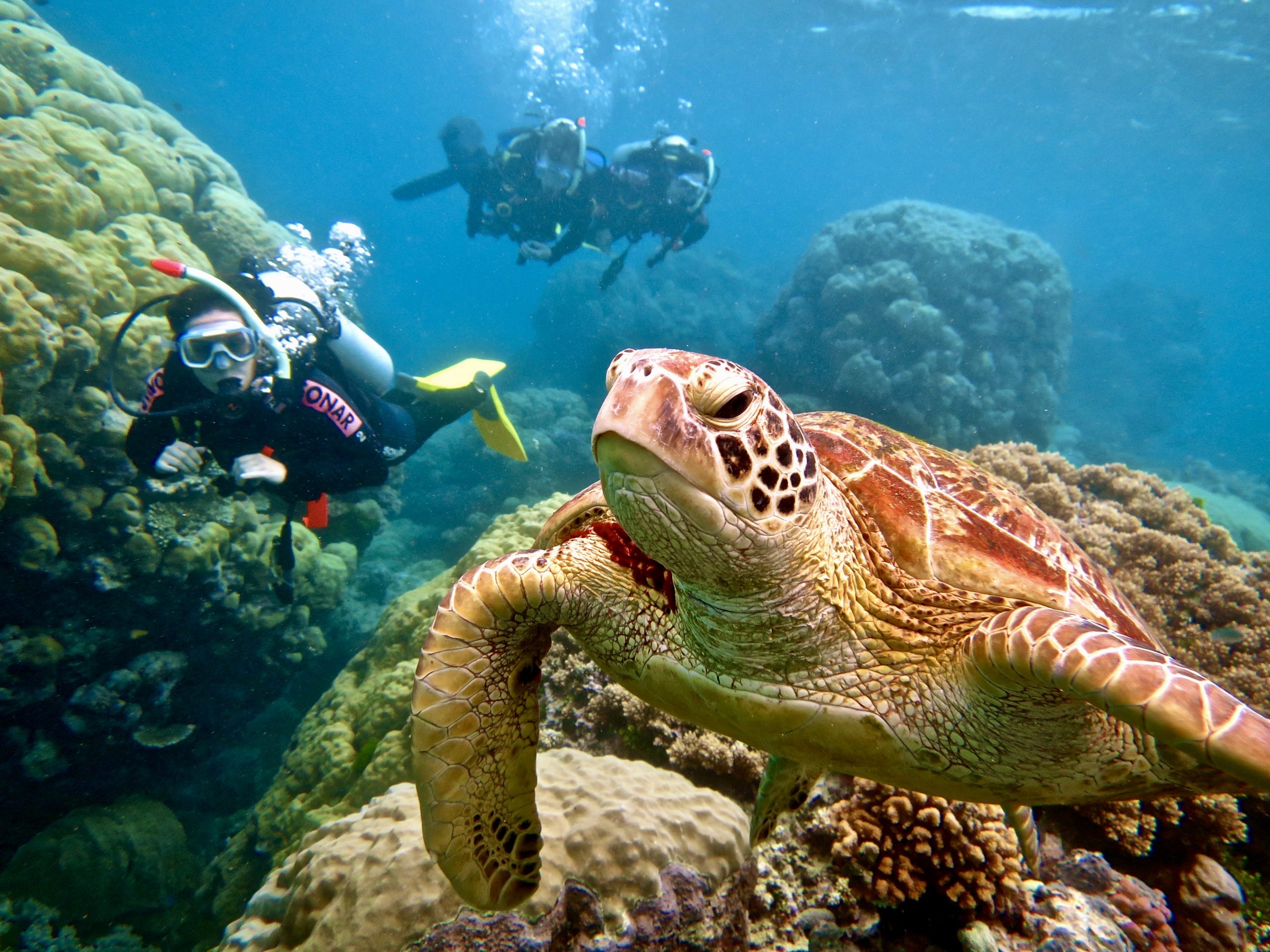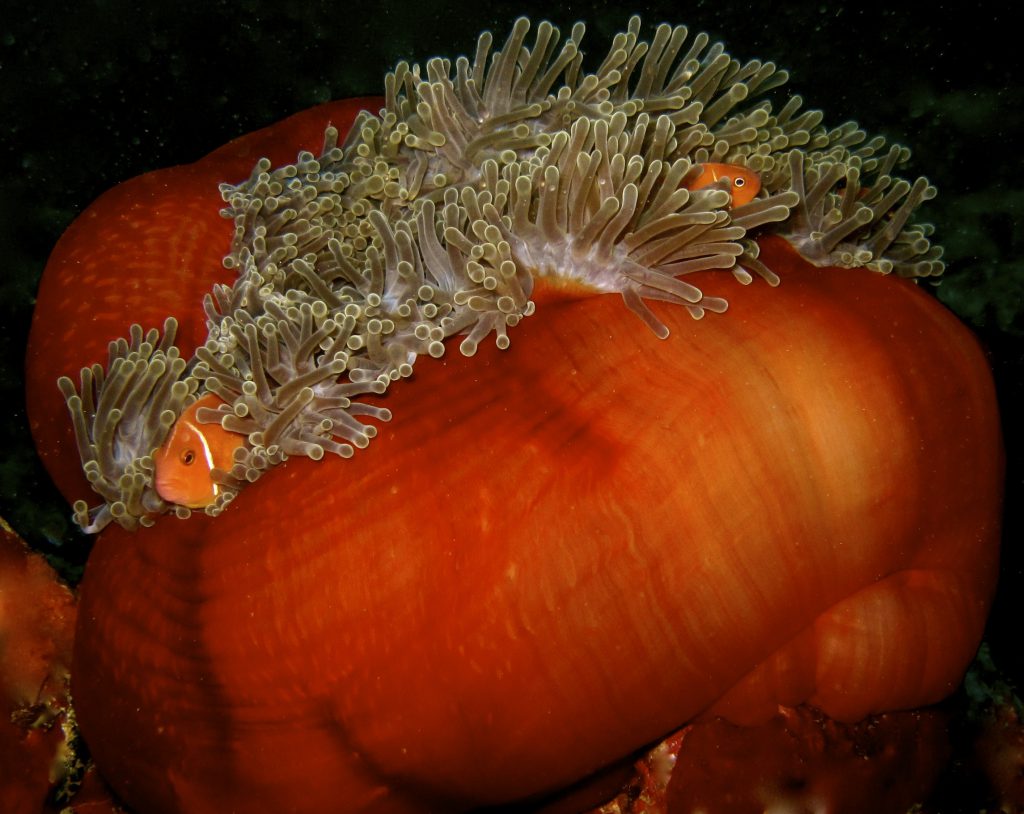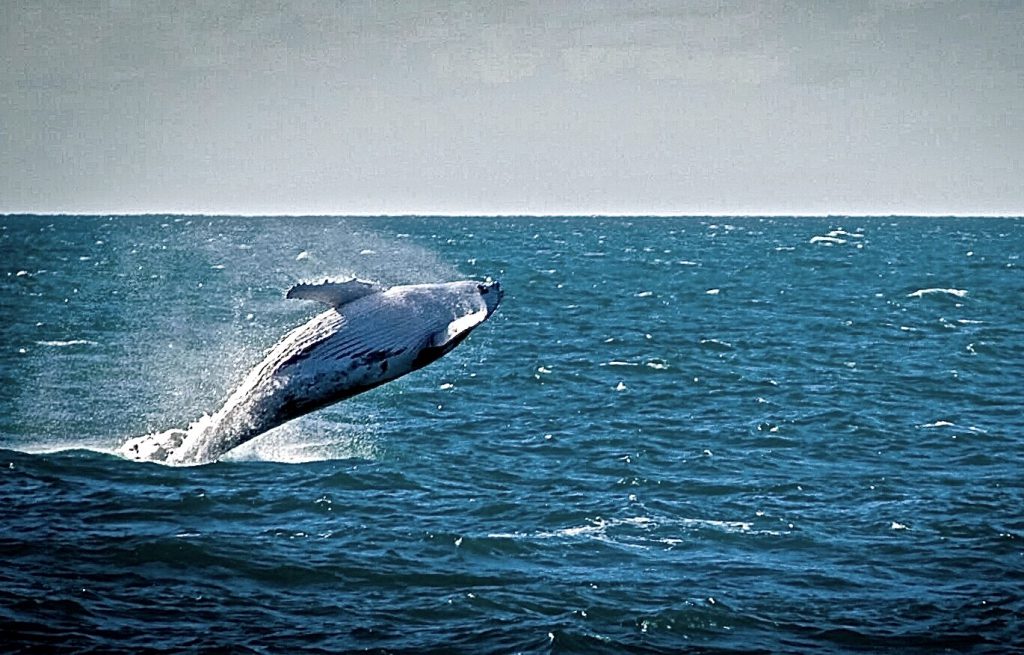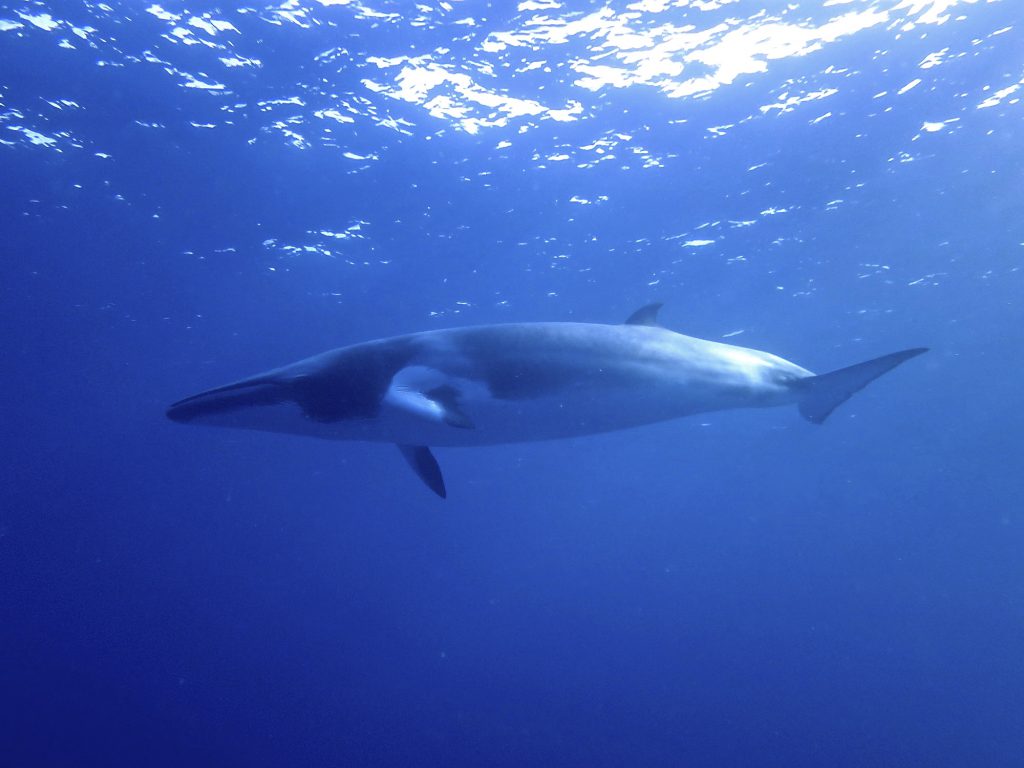We regularly get asked this question by Scuba divers visiting the Great Barrier Reef off Port Douglas and Cairns, so let’s have a go at answering it.

Scuba divers encounter a turtle on the outer Agincourt Reefs off Port Douglas on the Great Barrier Reef. July 2020.
A quick and easy answer would be – “The Great Barrier Reef is set in far North Queensland, which has a wonderful and warm tropical climate that’s hard to beat anywhere else in Australia”. “Scuba Diving from Port Douglas is great all year round”.
This is perfectly true – water temperatures range from 23C (75.2F) to 31C (88F) – but there are real differences depending on the month. Please read on…
Many scuba divers who visit once a year may not realise that we have pretty distinct seasons underwater on the Great Barrier Reef. And remember Australian seasons are the opposite of those in the northern hemisphere.
But yes, any dive instructor who has worked scuba diving on the Great Barrier Reef will be familiar with these underwater seasons. There are 2 main seasons with several shades in between.
Indigenous Australians identified 6 seasons in the tropics, with degrees of humidity, heat, rain and wind.
The dry season runs from May through to October and the wet season running from late-December through to March. These timings have become slightly more fluid with climate change.
Let’s start with the wet season (see 1 section below), then the dry season (see section 2 below) and then we’ll deal with the times in-between (see sections 3 and 4 below).
And in Section 5 we give the definite answer!
So lets kick off with our “Year in the life of the Great Barrier Reef”…
There are plenty of good things about diving at this time of the year.
The water temperature soars up to 31c – No wetsuits needed! We only need lycra stinger suits at this time of the year. These suits protect us from both jellyfish and sunburn.
The heat encourages a plankton bloom which – added to the sediment washed out from the rains over land – reduces visibility a little. Although diving on the outer Agincourt Reefs is less impacted as we are a long way from land. We are close to the edge of the continental drop-off where the reefs are regularly washed out by the crystal clear waters that sweep in from the Coral Sea.

Rainfall, air and water temperatures, Port Douglas
But these clouds have plenty of silver linings for divers…
One of natures true wonders occurs every year on the Great Barrier Reef after the full-moon in either early November or December.
The Coral Spawning is amazing. Every year the Great Barrier Reef “gives birth”. The corals naturally synchronise the release hundreds of eggs and sperm into the water for fertilisation. The eggs and sperm float around the open ocean until many are fertilised and find hard surfaces, often rock or dead coral to settle and develop.
The eggs and sperm, when released, has been described as being like “an upside down snow storm”.
And Plankton attracts plankton-eaters after all. Occasionally a manta or even a whale shark can be seen in the Agincourt Reefs Port Douglas at this time of the year.
As the water is at its warmest it’s also the time for much marine life to reproduce. Juvenile animals are best able to survive their early stages in warmer water.
All kinds of unusual behaviour can be seen – Perhaps you’ll spot a female Coral Trout eyeing up a male opposite them, usually on the sandy flats beneath a reef wall.
If you see a turtle “piggy-backing on another” you are witnessing what we usually think of as a private ritual!
And the later part of the wet season sees a multitude of juvenile marine life emerge onto the reef.
All experienced scuba professionals will also retell the stories about avoiding aggressive Titan Triggerfish that are very protective of their nests at this time of the year. All our Blue Dive privately guided trips and led by experts who will take you on a course away from these nests!
If you dream about those amazing “glass-out” days, where the water is literally as flat as a sheet of glass, more often than not its between October and March. This weather is great for Introductory diving as the surface of the sea can be like a pool.

And on land some call the Wet Season the “Green Season” as the rain refreshes everything – all the waterfalls and rivers run spectacularly.
The dry season runs from approximately late May through to August or the start of September. It’s a stunning time of the year.
This is the time of the best visibility on the Great Barrier Reef, with bright sunlight creating a kaleidoscope of colour in the shallows.

Its winter time in Australia – although it doesn’t mean much here in the tropics – many Australians come north to escape the colder climates of Melbourne, Adelaide and Sydney. Clear blue skies, no humidity and 28c is the norm, it doesn’t get much better.
We also have south-easterly trade winds at this time of the year but both Poseidon and Silversonic, both superb streamlined catamarans, are designed to get through a bit of wind with ease.
The reefs team with life, but the winds mean if you suffer from sea-sickness we recommend sea-sickness tablets – Travelcalm is good – at least 30 mins before the boats leave Port Douglas or Cairns. Taking this advice will ensure you have great time.
It’s also the time of Humpback whale migration along the east coast. These huge yet majestic mammals, travel north in July to calve in our warm waters – and back south in September to feed in the krill-rich Antarctic.
Watching a 15 metre Humpback breeching is an incredible experience.

Minke Whales are another winter visitor to the Agincourt Reefs off Port Douglas. For a period of a few weeks – usually some time around June/July we witnesses one of natures wonders. Juvenile Minke whales, up to 7 metres long become very inquisitive and will approach dive boats.
Both boats that we use regularly -Poseidon and Silversonic – have official licences to swim with Minke Whales, under controlled and safe conditions that do not impact or worry the whales.

The seas are still warm and visibility improves by the day – warm evenings, calm sea and sunny days are common – and the humidity of the wet season gives way as we get nearer to the dry season.
Black-Tipped reef sharks give birth to between 1-9 pups in early April, whilst glass fish now start to smother bommies (coral pinnacles). You can also spot many juvenile Anemonefish dancing in the anemones.
Watch out for the huge Queensland Groupers that can often be seen at this time.
May is a transitional time with the warmer water giving way to cooler waters. This encourages the migration of several species.
It’s relatively quiet in Port Douglas, with the month May being a hidden secret and and a super time to visit if you can get away.
The “winter” is now over and both the air and sea are warming up nicely. The trade winds drop-off meaning clear, calm and sunny days are common, great for Introductory Scuba Diving as well as PADI Open Water courses.
If you are lucky you’ll have one of those brilliant Glass-out days.
Snappers and Emperors start to shoal in large numbers, getting ready to spawn. Slipper Lobsters can be seen under rocky ledges.
And turtles can be seen feeding on sea grass an algae – by November the mating ritual begins as we approach the wet season.
Outside the school holidays it is often groups of friends or couples that visit and dive the reefs off Cairns and Port Douglas at this time to the year.
Late September through to October and early November is pretty quiet in Cairns and Port Douglas – a wonderful time to visit. our favourite time as the visibility is great and the warming of the water encourages reproductive behaviour.
Ok so here’s our answer – If you can get away at this time of the year, for nice and warm temperatures on land and underwater, the hidden secret that most locals in Port Douglas and Cairns would vote for? May/early June and then late September, October/November. It’s quiet, warm (even at night), but not too humid. And the diving is great.
As we said at the start, the obvious choice for many is the dry season as the underwater visibility is at its best.
And remember marine life is fascinating to watch in the wet season. And on land the rainforest comes alive and the waterfalls flow.
Thank you for reading.
© Blue Dive Port Douglas 2025